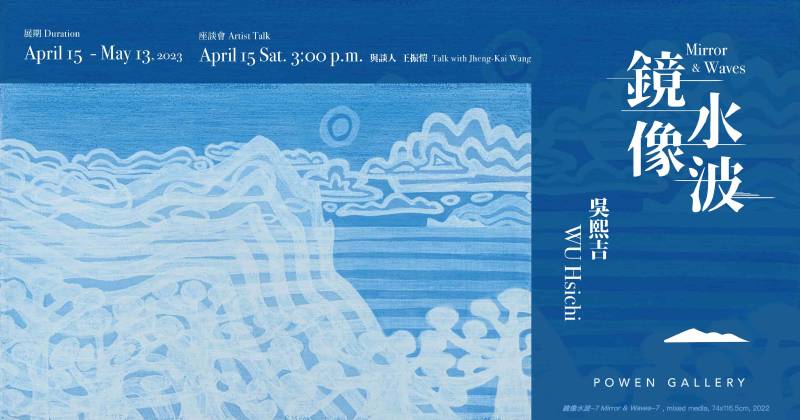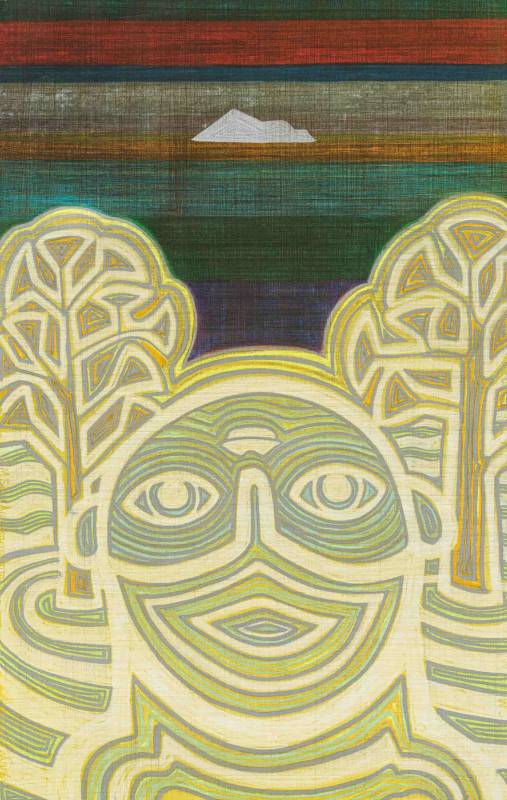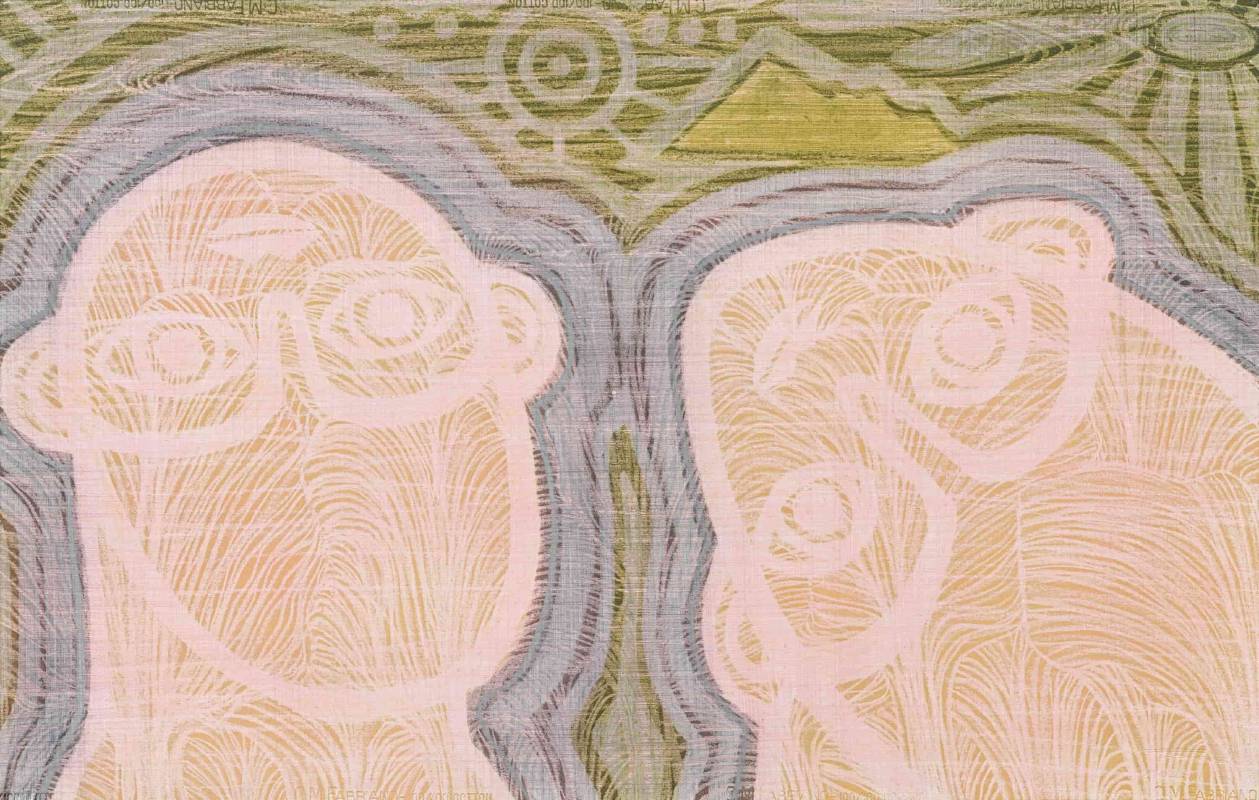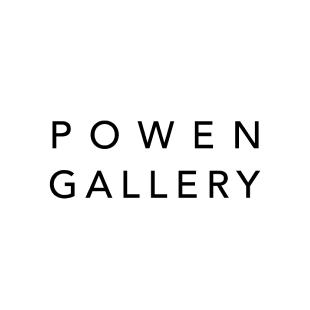紅野畫廊
【吳熙吉 : 鏡像水波】WU Hsichi : Mirror & Waves

-
展期
日期:2023-04-15 ~ 2023-05-13
-
地點
台北市中山區松江路164巷11號
-
相關連結
Powen Gallery Website
Powen Gallery Instagram
Powen Gallery Facebook -
參展藝術家
吳熙吉 WU Hsichi
-
吳熙吉:鏡像水波
WU Hsichi: Mirror & Waves
藝術家 Artist|吳熙吉 WU Hsichi
展期 Duration|April 15 – May 13, 2023
座談會 Artist Talk|April 15 Sat. 3:00 p.m. 與談人 王振愷 Talk with Jheng-Kai Wang
地點 Venue|紅野畫廊 Powen Gallery(台北市中山區松江路164巷11號,10:00-19:00 週日及週一休館 Closed on Sundays & Mondays)
鏡花水月裡的禪與藝:吳熙吉「鏡像水波」個展
文/王振愷
長期以油性粉彩進行創作的藝術家吳熙吉,近期推出全新個展「鏡像水波」,此次新作延續2012年「羅漢系列」至今所奠定下的個人風格,並且持續精進。過去許多評論者已點示他這一系列創作如何以油彩堆疊,再透過反覆刮除、捻壓等專利技法,讓顏料緊密鑲嵌於畫紙的深層處,解決材料掉粉的問題也創造出獨有的迷濛質感。
在繪畫主題上,這十年來吳熙吉緊扣著兩大意象「軀殼」與「島嶼」創作:前者可以視為肖像畫的轉生,畫面中雖然有具體人像的描繪,但外表上卻是非人或異星人的樣態,不管真正指涉的是誰?對於藝術家來說這些人形皆只是乘載靈魂的軀體、人性的牢籠;後者則能以風景畫途徑思考人與理想自然間的關係詮釋,吳熙吉創造出的離島、山脈都與畫中的人物,甚至是畫作前的觀者產生一道跨不過的距離,象徵著藝術家能夠不斷探尋的境地,亦是他定居東海岸的生活場景再現。
鏡像:鏡花水月
然而,細看這批新作能發現最大轉變就在色彩的選用,其中以藍黑色作為本次新作的主要色調,畫面元素也化繁為簡,或許暗示著藝術家新一階段的創作轉向?巧合的是,2012年吳熙吉曾以「鏡像遊樂園」作為他告別前一階段、以環氧樹酯創作的個展展名,從此全然投注在油性粉彩的媒材探索上。
同樣以「鏡像」出發,很容易聯想到法國學者拉岡(Jacques-Marie-Émile Lacan)的「鏡像階段理論」(the mirror stage)。學說裡提到嬰兒在約一歲半時會在鏡面前辨認出自己的影像,就此與母親的身體區分開,進而意識到自我的存在,過程中可能造成愉悅、自戀,或是創傷、痛苦。我們當然能透過精神分析的途徑,重新思考吳熙吉為何在畫作場景中不斷迴返出生地金瓜石,那個霧氣氤氲的原鄉風景;又或是他選擇孩童最常使用的粉彩與蠟筆,返璞歸真回到藝術最純粹的樣貌。
不過從此次整體題名「鏡像水波」看起,我認為更直接指涉的是佛語裡的「鏡花水月」,暗示著畫面裡的影像虛幻皆空,這也呼應著新作中除了出現前述的「軀殼」與「島嶼」,「明月」也成為畫面中重要的視覺元素。「明月」在禪學中象徵著人類心靈的純淨與善良,也是真理的所在之處,吳熙吉自二十五歲時接觸禪宗,修行的體悟皆融會在他的藝術實踐中。
禪與藝:繪畫禪
接續,我要借用學者海倫.威斯格茲(Helen Westgeest)在《禪與現代美術:現代東西方藝術互動史》(Zen in the fifties-interaction in art between east and west)一書裡頭歸納1950年代以來,具禪藝術傾向的西方藝術家所共同關注的五項特點:無限與周圍空間、當下的直接體驗、動力說、空與無、非二元論與普遍性。以此框架,進一步探究過去評論始終對於吳熙吉作品中禪學面向的懸置,並深化藝術家過去曾提出「繪畫禪」之概念,小結此篇對於「鏡像水波」個展的討論。
無限與周圍空間、當下的直接體驗能作為詮釋吳熙吉畫面的空間部署,在「鏡像水波」系列中可以看見藝術家將人像、植物與山脈置於前景,象徵理想境地的島嶼與明月則在遠景處,中間有一面海洋阻隔,或是窗框框限。這是吳熙吉每日從宜蘭住家望向太平洋的景象,也像是內心對於真實世界的一道鏡面。這樣的視角也呼應著後疫情背景下,人類準備出走的情境,而色調上藍黑色的轉向呈現出他這一年來面臨親密家人歷經疾病、苦痛的心理狀態。
動力說回應著吳熙吉每天如修行般的繪畫行為,也因為過去土木工程與庭園造景的工作經驗,他對媒材有極高的材料敏感度,在構圖的空間配置上相當精準,但在繪畫過程中卻有自動性技法的不設限、隨興感,形式上有著禪繞畫(Zentangle)般不具象與專注的精神。藝術家的身體力行對應著他的創作思想,空靈與虛無、非二元論與普遍性可以小結吳熙吉此階段的美學核心,在近期發佈的藝術家專訪影片中他就破題:「我喜歡虛空」。
跳脫外在形式、東西文化框架的束縛,吳熙吉在禪學、《金剛經》還有西方藝術史經典中汲取靈感,從抽象、具像又走到極簡,將生命經驗昇華成畫面裡的鏡花水月,以及禪裡的最終悟道。
—
WU Hsichi: Mirror & Waves
Artist | WU Hsichi
Duration | April 15 – May 13, 2023
Artist Talk | April 15 Sat. 3:00 p.m. Talk with Jheng-Kai Wang
Venue | Powen Gallery(No. 11, Lane 164, Songjiang Road, Zhongshan District, Taipei City, Taiwan 10491 / 10:00-19:00 Closed on Mondays)
Zen and Art in the Moon in the Water: WU Hsichi’s Solo Exhibition Mirror & Waves
Written by Jheng-Kai Wang
WU Hsichi, known for his oil-based pastel compositions, has recently launched a solo exhibition titled Mirror & Waves. This new series of works continues to build upon his artistic style established since the ‘Luohan(Arhat) Series’ in 2012 while perfecting his techniques. Critics have shared their remarks on how WU created this series of works by employing his unique techniques of first layering, then repeated scraping and smearing to allow pastels to ingrain into the fibres of the paper, preventing the flaking off of the pastels and creating an exceptional texture of mistiness.
WU’s creations over the past decade have been imbued with two primary themes: 'the shell' and 'the island'. The former can be regarded as a reincarnation of the portrait genre, but with a unique twist: the human figures depicted are nonhuman or alien in appearance, regardless of their actual referents. For the artist, these figures represent nothing more than mere vessels for the soul, a prison of humanity. The latter embodies the contemplation of the relationship between man and an ideal nature through landscape painting. WU's depiction of outlying islands and mountains evokes an insurmountable sense of distance between the figures in his paintings and even the viewer, symbolising a space of exploration for the artist and a re-presentation of his life on the East Coast.
Mirror Image: Flowers in the Mirror, Moon on the Water
Upon closer examination, however, it becomes evident that the most significant transformation in WU’s recent paintings lies in the colour palette, as blue and black emerge as the focal tones, and the painting's elements are simplified, suggesting a creative turn in the artist’s creative journey. Coincidently, in 2012, WU marked a departure from his prior phase of creating art with epoxy resin by naming his solo exhibition Mirror Playground. Since then, he has focused solely on exploring oil pastels as a medium for his artistic endeavours.
Centring also on the ‘mirror image’, the titles readily invite associations with the mirror stage posited by the French scholar Jacques-Marie-Émile Lacan. According to this theory, infants at approximately eighteen months of age display self-awareness by recognising their own reflection in a mirror, thus distinguishing themselves from their mothers and becoming conscious of their own existence. This process can be pleasurable, narcissistic, traumatic, or painful. Through psychoanalysis, we can delve into WU's recurring depiction of the misty and hazy scenery of his hometown and birthplace, Jinguashi, or his use of pastels and crayons, which are commonly used by children, implying possibly a return to the true essence of art in its purest form.
Yet judging from the title of this exhibition, Mirror & Waves, it appears to be more closely associated with the Buddhist concept of ‘Flowers in the Mirror, Moon in the Water,’ denoting that the images depicted in the paintings are devoid of any illusions. It also embodies, in his new works, apart from the two aforementioned themes ‘the shell’ and ‘the island’, the symbol of the ‘bright moon’ as a significant visual element. In Zen Buddhism, it is a symbol of the purity and goodness of humans and the place where truth resides. WU has been practising Zen Buddhism since the age of twenty-five and has integrated his spiritual insight into his artistic creations.
Zen and Art: Zen in Painting
In their book “Zen in the Fifties-Interaction in Art Between East and West,” Helen Westgeest’s identified five key themes that influenced Western-based artists approaching the concept of Zen in the 1950s: Indefinite and Surrounding Space, Direct Experience of Here and Now, Dynamism, Emptiness and Nothingness, Nondualism and the Universal. Mirrors and Waves provides an overview of this framework by illuminating the concepts of Zen which are central to WU Hsichi’s practice but were previously undiscussed. Then, it explores the concepts of Zen in painting’ put forth by WU himself.
Indefinite and Surrounding Space, Direct Experience of Here and Now are the theoretical devices which elucidate WU’s use of space in his compositions. In the works, the artist places human figures, plants, and mountains in the foreground while the island and the bright moon—separated by the sea or framed by a window—symbolize ideal places but are situated in the background. The paintings present a depiction of WU's home in Yilan, overlooking the vastness of the Pacific Ocean, reflecting the artist's inner world. This perspective resonates with the current post-pandemic context, where humanity prepares to venture beyond the confines of their houses. The shift towards a palette of blue-black tones in the paintings reflects the artist's emotional state, having been confronted with the illness and the suffering of loved ones over the past year.
Dynamism in Helen Westgeest's framework resonates with WU's painting practice through daily rituals of spiritual discipline. WU's background in civil engineering and landscaping honed his sensitivity to materials and precision in composition, yet he embraces spontaneity and unconstrainability in his creative process. The resulting form resembles to that of Zentangle, both non-representational and meditative in spirit. WU's bodily practice is intrinsically linked with his creative process. It wouldn’t be an overstatement, therefore, to attribute Emptiness and Nothingness, Non-dualism and the Universal quality to WU’s work. As he emphasized in a recent artist interview, ‘I am drawn to the void.’
WU draws inspirations from various sources, ranging from Zen, the Diamond Sutra, to the Western canon. His practice defies categorization and cultural frameworks, spanning from the abstract, the figurative, to the minimalistic. His works sublimate his lived experiences into the ephemeral images of ‘Jing Hua Shui Yue' (flowers in the mirror, moon in the water), and in so doing propels him toward Enlightenment.
-
REFERENCE
Powen Gallery Website
Powen Gallery Instagram
Powen Gallery Facebook
推薦展覽
view all紅野畫廊
【你們說,這片草原美不美?– 陳漢聲個展】Chen Han Sheng : Isn't It a Beautiful Meadow?
日期:2022-10-15 ~ 2022-11-05|台灣,台北市






